This article was co-authored by Zora Degrandpre, ND. Dr. Zora Degrandpre is a Natural Health Doctor and Licensed Naturopathic Physician in Vancouver, Washington. She is a grant reviewer for the National Institutes of Health and the National Center for Complementary and Alternative Medicine. She received her ND from the National College of Natural Medicine in 2007.
There are 13 references cited in this article, which can be found at the bottom of the page.
This article has been viewed 210,285 times.
Athlete’s foot, also called tinea pedis, is a common fungal infection that causes a scaly rash on your feet. It usually starts in between your toes and spreads from there. This rash isn’t dangerous, but can be annoying and itchy. The simplest and most effective treatment for athlete’s foot is an over-the-counter antifungal cream, which usually clears the rash within 2 weeks.[1] Unfortunately, home remedies are less successful. You can try some for yourself and see if they work. If not, then switch to an antifungal cream or visit a podiatrist for further treatment.
Steps
Home Remedies That Might Work
Athlete’s foot can be tough to get rid of, and home remedies have a mixed record in treating the rash. You can try these home treatments to see if they work. If 1-2 weeks go by and you don’t see any improvement, then switch to an over-the-counter antifungal cream containing miconazole, clotrimazole, terbinafine, or tolnaftate, which are usually the most effective. Apply it according to the instructions.[2]
-
1Rub 50% tea tree oil cream onto the rash. Tea tree oil is a possible home remedy for athlete’s foot. Get a cream containing a 50% concentration of tea tree oil and rub it onto your rash twice a day. Continue this treatment for 2-4 weeks to clear the rash.[3]
- If you get undiluted tea tree oil, dilute to a 50% concentration. Use a carrier oil like jojoba or olive. Then mix 1/2 tsp (2.5 ml) of carrier oil with 1/2 tsp (2.5 ml) of the tree oil for a 50% mixture.[4]
- Weaker concentrations of tea tree oil, as low as 10%, might help reduce the rash, but generally won’t kill all of the fungus.[5]
-
2Apply ajoene extract to kill the fungus. Ajoene is a compound in garlic that small studies show can kill the athlete’s foot fungus. Get a 1% concentration of ajoene oil or gel. Rub this onto the rash twice a day for 1-2 weeks to see if this works for you.[6]
- You might also be able to use raw garlic as an antifungal treatment.[7] However, raw garlic hasn’t been studied specifically against athlete’s foot.
Advertisement -
3Try a vinegar foot soak to kill bacteria and odor. This is another popular home remedy for athlete’s foot. It hasn’t been widely studied, but some people find it helpful.[8] Mix 2 parts of warm water with 1 part of white or apple cider vinegar. Then soak your feet for 15-20 minutes. This might kill the fungus causing your rash.[9]
- You should only do a vinegar soak once a week, so you’ll probably have to try other methods as well.
- Vinegar is acidic and might cause some burning or irritation if you have cuts on your feet.
Preventing the Rash from Spreading
Athlete’s foot is contagious, and it could spread to other people or parts of your body. Whether you’re treating it with home remedies or OTC creams, you have to take steps to prevent it from spreading until the rash heals. The following tips can help you contain the rash while you wait for the treatments to take effect.
-
1Wash your feet with soap and water twice a day. It’s very important to wash your feet so the fungus doesn’t spread. Wash in between your toes, or anywhere else that the rash is, with soap and water. Then rinse all of the soap off. Repeat this twice per day until the rash clears.[10]
- Remember to wash your hands after cleaning your feet. This prevents the fungus from spreading.
- This is also an important practice to prevent athlete’s foot, so wash your feet every time you bathe.
-
2Dry your feet whenever they’re wet. Fungus grows in warm, wet environments like sweaty feet. Whenever your feet get wet or sweaty, use a towel and dry them off. Remember to get in between your toes, which is where athlete’s foot usually starts.[11]
- To dry your feet further, you could rub some talcum powder onto your feet.[12]
- Only use the towel once and then wash it. Otherwise you could spread the fungus.
-
3Change your socks and shoes daily. The athlete’s foot fungus could live in your socks and shoes, so don’t wear the same ones every day. Change your socks twice a day, especially after your feet get sweaty. Also try not to wear the same pair of shoes more than 1 day in a row. This gives them time to dry out before you wear them again.[13]
-
4Take off your shoes when you’re at home. Keeping your shoes on provides a good environment for the fungus to grow and spread. When you get home, take your shoes off so your feet can dry and cool off.[16]
- If you take your socks off, be sure to wear a pair of sandals. You could spread the fungus if you walk around barefoot.
-
5Resist the urge to scratch or touch the rash. The athlete’s foot fungus is contagious and you could spread it around if you touch the rash. While the itching might be annoying, do your best to ignore it and avoid scratching the area. This also helps the rash heal faster.[17]
- If you do accidentally touch the rash, wash your hands right away so you don’t spread it.
-
6Use your own towels, shoes, and personal items. Sharing towels, nail clippers, shoes, and other personal items can definitely spread the rash to other people. Don’t share any personal items with others in your home to keep the rash contained.[18]
- Using your own personal items is generally a good practice, even if you don’t have athlete’s foot. It prevents people from accidentally spreading fungus or bacteria to each other.
-
7Stay away from public pools and showers until the rash clears. These are some of the most common places that athlete’s foot spreads. Be considerate of other patrons and avoid these areas until your rash clears up.[19]
- If you do have to go to a place like this, don’t walk around barefoot. Always wear sandals or some other footwear so you don’t spread the fungus.
Medical Takeaways
While athlete’s foot is a curable condition, home remedies have a mixed success rate. Some might work, but usually not as well as conventional antifungal creams. If you do try some home remedies, monitor the rash to see if the treatments are working. If not, then switch over to an OTC cream for a better chance of success. If this doesn’t work within 2 weeks either, then a podiatrist can prescribe further treatments to get rid of the rash for good.
Expert Q&A
-
QuestionWhat if your feet get wet when you are at school and you can't take your shoes off?
 Zora Degrandpre, NDDr. Zora Degrandpre is a Natural Health Doctor and Licensed Naturopathic Physician in Vancouver, Washington. She is a grant reviewer for the National Institutes of Health and the National Center for Complementary and Alternative Medicine. She received her ND from the National College of Natural Medicine in 2007.
Zora Degrandpre, NDDr. Zora Degrandpre is a Natural Health Doctor and Licensed Naturopathic Physician in Vancouver, Washington. She is a grant reviewer for the National Institutes of Health and the National Center for Complementary and Alternative Medicine. She received her ND from the National College of Natural Medicine in 2007.
Natural Health Doctor Maybe you can bring extra socks with you to school and at least change your socks. Try to let your feet dry off as much as possible by using paper towels.
Maybe you can bring extra socks with you to school and at least change your socks. Try to let your feet dry off as much as possible by using paper towels.
References
- ↑ https://www.mayoclinic.org/diseases-conditions/athletes-foot/diagnosis-treatment/drc-20353847
- ↑ https://medlineplus.gov/ency/article/000875.htm
- ↑ https://pubmed.ncbi.nlm.nih.gov/12121393/
- ↑ https://www.takingcharge.csh.umn.edu/how-do-i-choose-and-use-essential-oils
- ↑ https://pubmed.ncbi.nlm.nih.gov/1303075/
- ↑ https://pubmed.ncbi.nlm.nih.gov/11050588/
- ↑ https://www.ncbi.nlm.nih.gov/pmc/articles/PMC2629014/
- ↑ https://www.ncbi.nlm.nih.gov/books/NBK279548/
- ↑ https://health.clevelandclinic.org/4-sure-fire-ways-you-can-avoid-stinky-feet/
- ↑ https://medlineplus.gov/ency/article/000875.htm
- ↑ https://www.mayoclinic.org/diseases-conditions/athletes-foot/diagnosis-treatment/drc-20353847
- ↑ https://uhs.umich.edu/athletes_foot
- ↑ https://www.mayoclinic.org/diseases-conditions/athletes-foot/diagnosis-treatment/drc-20353847
- ↑ https://www.cdc.gov/healthywater/hygiene/disease/athletes_foot.html
- ↑ https://uhs.umich.edu/athletes_foot
- ↑ https://www.ncbi.nlm.nih.gov/books/NBK279549/
- ↑ https://www.mayoclinic.org/diseases-conditions/athletes-foot/diagnosis-treatment/drc-20353847
- ↑ https://www.aad.org/public/diseases/a-z/athletes-foot-prevent
- ↑ https://www.cdc.gov/healthywater/hygiene/disease/athletes_foot.html
- ↑ https://www.mayoclinic.org/diseases-conditions/athletes-foot/diagnosis-treatment/drc-20353847
- ↑ https://medlineplus.gov/ency/article/000875.htm
About This Article
To cure your athlete’s foot naturally, soak your feet in a vinegar solution and apply tea tree oil. First, mix 4 parts water with 1 part vinegar in a tub. Make sure you wash and dry your feet before soaking them in the vinegar solution so you don’t spread bacteria. Soak your feet for about 10 minutes twice a day. After you’ve soaked your feet, dry them with a clean towel and apply some tea tree oil. You’ll need to use a product that contains 25 to 50 percent tea tree oil to cure your infection. Do this twice a day after soaking your feet in vinegar. Make sure you wash your hands after touching your feet to avoid spreading your athlete’s foot. If your symptoms don't improve after 2 weeks, visit your doctor, who can prescribe anti-fungal medication. For more tips from our Medical co-author, including how to prevent athlete’s foot in the future, read on.





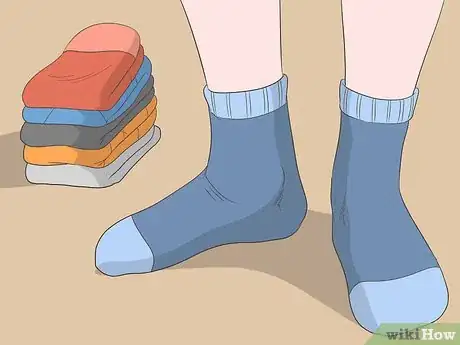

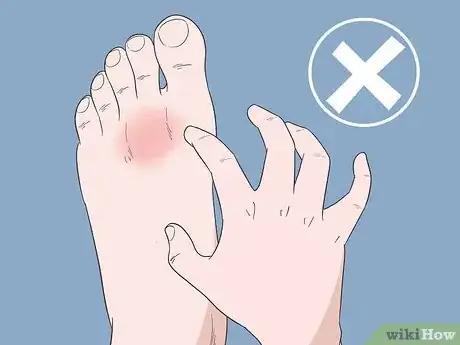
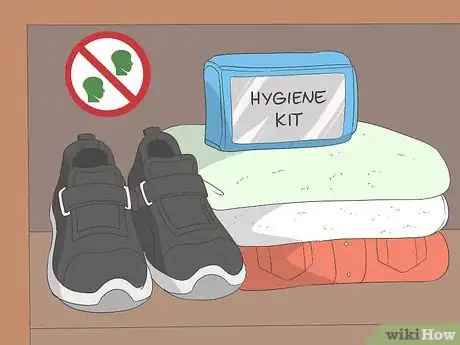

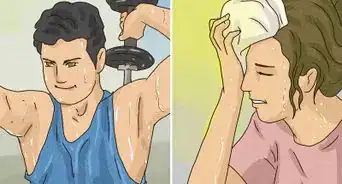


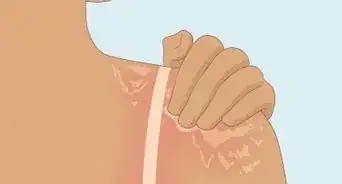

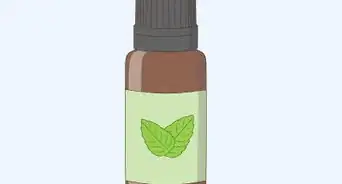
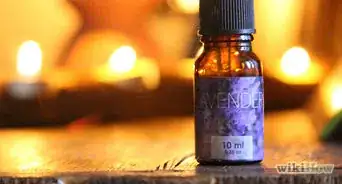

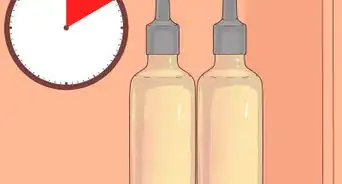
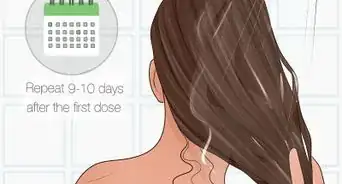








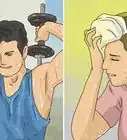






































Medical Disclaimer
The content of this article is not intended to be a substitute for professional medical advice, examination, diagnosis, or treatment. You should always contact your doctor or other qualified healthcare professional before starting, changing, or stopping any kind of health treatment.
Read More...